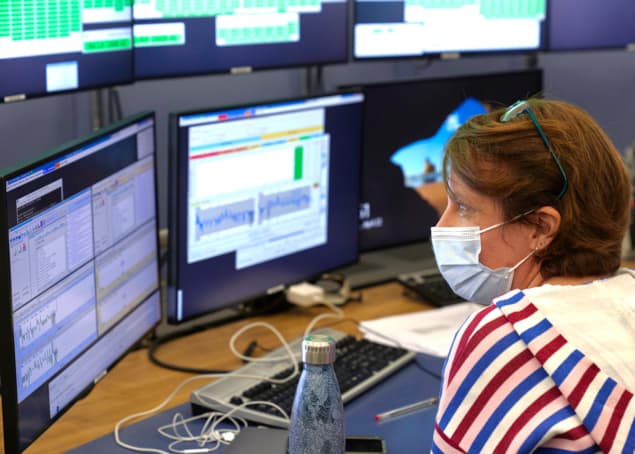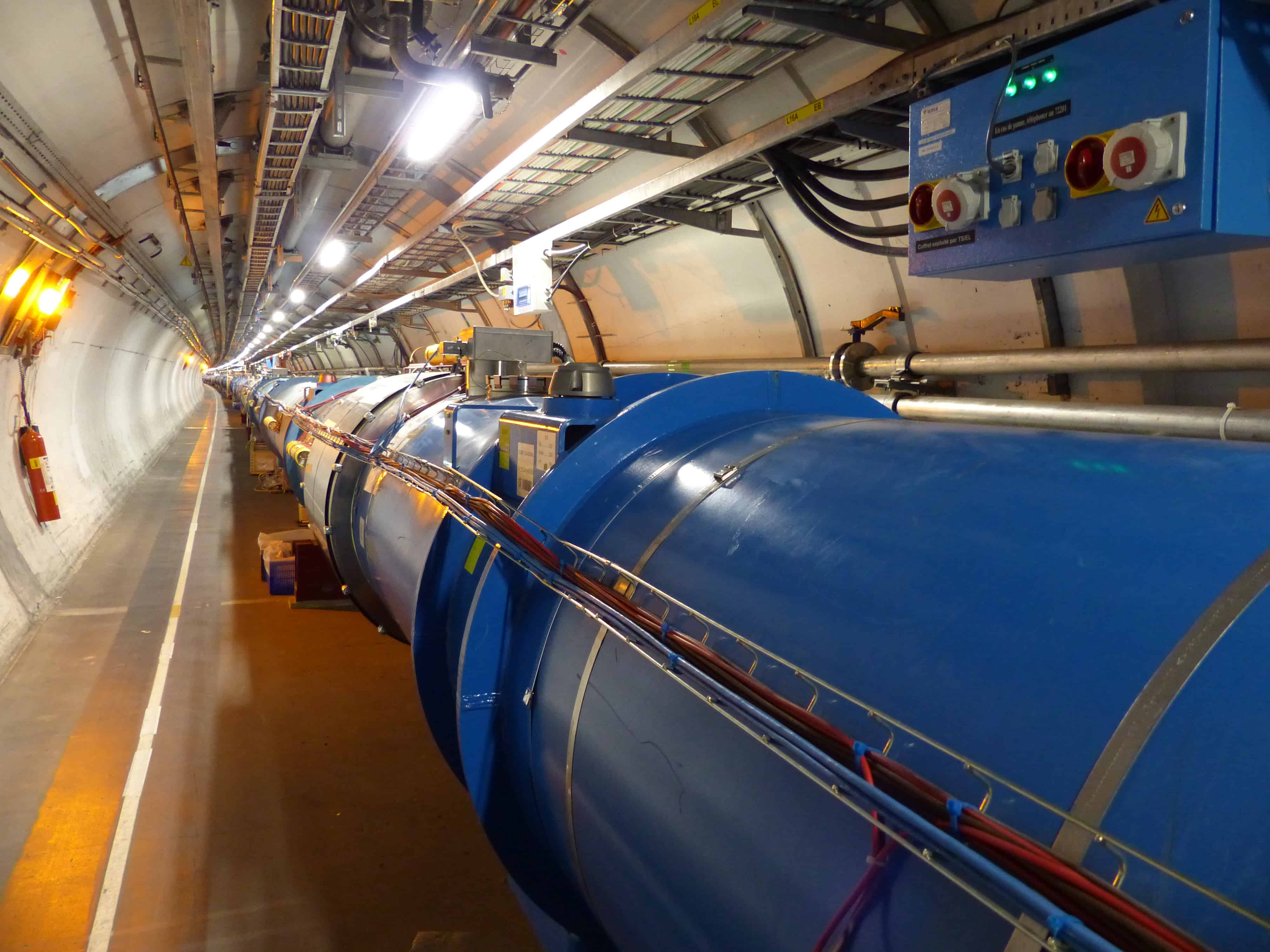 Officials at the CERN particle-physics lab have announced that the Large Hadron Collider (LHC) has successfully restarted following a three-year programme of maintenance and upgrades. Days after the switch-on on 22 April, engineers accelerated the two proton beams to a record energy of 6.8 TeV per beam and will now begin increasing the luminosity before first collisions later in June.
Officials at the CERN particle-physics lab have announced that the Large Hadron Collider (LHC) has successfully restarted following a three-year programme of maintenance and upgrades. Days after the switch-on on 22 April, engineers accelerated the two proton beams to a record energy of 6.8 TeV per beam and will now begin increasing the luminosity before first collisions later in June.
The LHC was shut down in 2018 to begin maintenance, consolidation and upgrade work to CERN’s accelerator complex. One such upgrade involved changing the way that protons are sent into the accelerator complex. It will now no longer be fed by protons but rather by negatively charged hydrogen ions that then have their electrons stripped off, leaving just the protons.
These protons are then joined by more negatively charged hydrogen ions that undergo the same process. By repeatedly crisscrossing the negative and positive ions, it is possible to create tightly packed bunches of protons, which means more particle collisions per second.
This third run of the LHC, called Run 3, will last until 2025 and will see the machine’s experiments collect data from collisions not only at a record energy but also in unparalleled numbers.
The ATLAS and CMS experiments are both expected to receive more collisions during this run than in the two previous physics runs combined, while LHCb will see its collision count increase by a factor of three. The heavy-ion detector ALICE, meanwhile, is expected to see a 50 times increase in the total number of recorded ion collisions.
“The LHC has undergone an extensive consolidation programme and will now operate at an even higher energy and, thanks to major improvements in the injector complex, it will deliver significantly more data to the upgraded LHC experiments,” says Mike Lamont, CERN’s director for accelerators and technology.

This is how CERN’s Large Hadron Collider looks during the 2019 shutdown
Once Run 3 ends, a big upgrade for the LHC is planned in which it will be converted into the High-Luminosity LHC (HL-LHC), which is designed to increase the collider’s luminosity increase by a factor of 10 over the original machine. Costing more than SwFr1.5bn (£1.1bn), the upgrade will require major modifications of the beamline around the two largest LHC detectors – ATLAS and CMS.
This will involve upgrading about 1.2 km of the 27 km ring by including 11–12 T superconducting magnets and superconducting “crab” cavities – which reduce the angle at which the bunches cross – to increase the number of collisions at the two detectors. Commissioning of HL-LHC is due to start in 2029.
